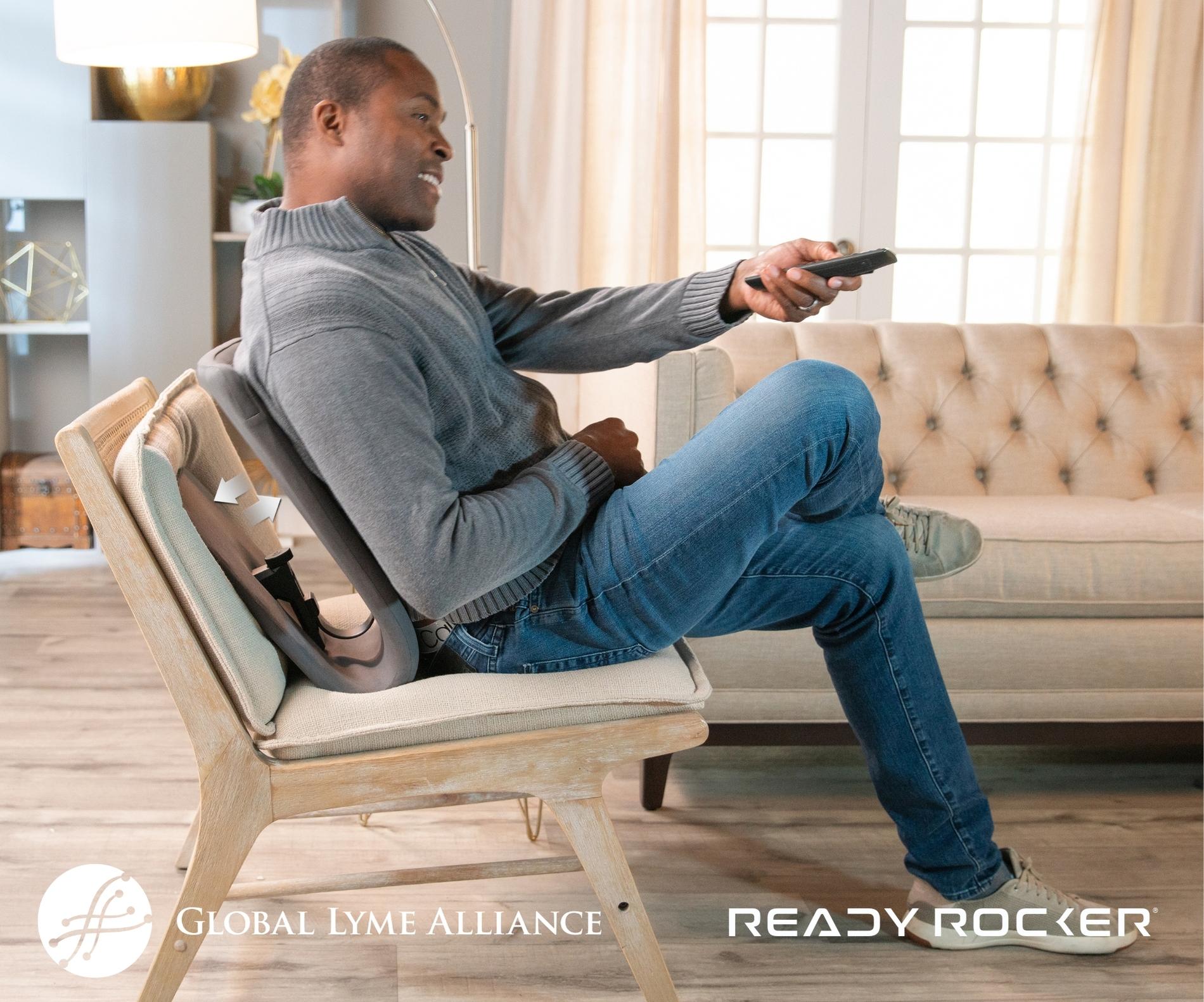
Our ability to adapt to our environment properly is determined by our neuroimmune system, and science now demonstrates that the nervous system highly controls and coordinates our immune systems. Not being able to adjust appropriately to stressors (whether chemical, mental, emotional, or subconscious ones) over a time frame can cause an excessive or abnormal stress load, which is the accumulation of stressors over one’s life. This can lead to a neuroimmune compromise, which can result in becoming more susceptible to having chronic symptoms or another chronic issue when coupled with Lyme disease.
Fortunately, there are many elements to leading a normal life after contracting Lyme disease. This article will also explain how rocking movements of the body can help appease symptoms of Lyme disease.
What Is Lyme Disease?
Lyme disease is a bacterial infection that can affect the skin, joints, nervous system, heart valves, and blood vessels. It is caused by a type of bacteria called borrelia burgdorferi. The bacteria is carried by the black-legged tick. When an infected tick bites you, it can transfer bacteria under the skin, leading to infection. Symptoms such as gastrointestinal, urinary, respiratory, psychiatric, cognitive, sexual, and reproductive issues are widespread in Lyme disease patients.
While diagnosing Lyme disease isn’t always straightforward, in many cases, it can be treated with antibiotics if it is noticed early enough. Nonetheless, when it comes to Lyme, it’s important to have proper adaptability rather than trying to unearth specific symptoms. To boost adaptability, rocking is encouraged by neuromusculoskeletal and allostatic stress specialist Dr. James Farley, who has worked with many Lyme disease patients.
How Rocking Can Help Ease Symptoms of Lyme
Living with Lyme disease is an ongoing challenge that requires persistence and patience. For others, confronting Lyme disease means adapting to new daily routines and limitations. Depending on the type of pain, there are ways that can help subdue the symptoms of Lyme disease, such as the rocking motion.
Almost anyone can agree that exercise can improve the health of anyone with any condition. Rocking is simply a concentrated form of exercise that accesses those benefits to improve adaptability. It can even be done with patients in a weakened state caused by acute or chronic Lyme.
Receptors and sensory neurons in the eyes, ears, skin, muscles, and joints are part of the nervous system's fundamental composition. The brain receives information from these neurons and, over time, learns how to respond and adapt appropriately. When you rock back and forth, you're stimulating these receptors that fire into the cerebellum that connects to the thalamus and hypothalamus. This stimulation can then influence our neuroimmune systems in a positive direction by enhancing adaptability.
If we wish to enhance adaptation to improve neuroimmune function for the Lyme patient, we can only do so when one’s neuroimmune system adapts and is regulated at a higher level.
The symptoms of Lyme disease can be relieved with suitable ergonomics and motion that can let your body stay loose and relaxed. The Ready Rocker is a great tool to access the potential symptom-easing benefits of rocking by turning virtually any seat (bed, couch, chair, even an airplane seat) in a rocking chair that relieves pressure on the back and joints while providing comfort and support. By consistently and regularly rocking with the Ready Rocker, we can help rewire and enhance adaptability.
“Ready Rocker is a non-invasive, home-based tool that can be used by any patient with chronic Lyme symptomatology to enhance outcomes and symptom management. A Lyme patient can be using this 2-3 times per day which will enhance adaptability and neuroimmune function and can likely manage various chronic symptoms. Whether you’re a doctor, patient, or a concerned relative or spouse, this can be a very safe and simple tool to help the Lyme patient.”
- Dr. Farley (DC, MS, BCIM, FAAIM, FAIS)
Certified health coach and wellness blogger, Carly, was diagnosed with Lyme disease in 2014. Below she provides her review of the Ready Rocker.
For a limited time, Ready Rocker, in partnership with Global Lyme Alliance (GLA), is offering a special promotion. To receive a limited-time discount of 20% off your purchase of the Ready Rocker, order here. For every order, Ready Rocker will donate $10 to GLA. Thanks to their 45 Day Risk-Free Guarantee, you can try the Ready Rocker wherever or whenever you need it most. If you don’t love it, simply send it back.
Conclusion
If you’ve ever dealt with Lyme disease or care for someone who does, you know that it can have a substantial impact on their day-to-day lives. Fortunately, there are many things you can do to confront the chronic conditions, improve adaptability, and improve quality of life. Start by thinking differently about this neuroimmune compromise and enhancing adaptability through the rocking motion. If you’d like to see if the Ready Rocker through its above mechanisms of action can ease and help you or your loved one’s Lyme symptoms, order here risk-free thanks to Ready Rocker’s 45 Day Risk-Free Guarantee and take advantage of their limited time 20% off discount.
 Editor: Dr. Farley (DC, MS, BCIM, FAAIM, FAIS) is a trusted and dependable doctor, advisor, consultant, health coach and creator of healABILITY concepts. He treats a variety of chronic and unresponsive health conditions and is regarded as one of the top doctors within his field. He has one of the largest practices of its kind in the United States and he has done television ads, radio interviews/ads, and produces science-based weekly blogs. Dr. Farley holds a Doctor of Chiropractic degree from New York Chiropractic College and a Master of Science degree in Human Nutrition from the University of Bridgeport. He is board certified in Integrative Medicine and has also completed training for the American Board of Childhood Development Disorders at the Carrick Institute for a Diplomate in Functional Neurology. Dr. Farley is a member of the American Institute of Stress, the International Parkinson and Movement Disorder Society, the International Association of Functional Neurology and Rehabilitation, the American Association of Integrative Medicine, the Academy of Integrative Health & Medicine, the Federation of Clinical Immunology Societies, the Infectious Disease Society of America, the Endocrine Society, and the Association of New Jersey Chiropractors.
Editor: Dr. Farley (DC, MS, BCIM, FAAIM, FAIS) is a trusted and dependable doctor, advisor, consultant, health coach and creator of healABILITY concepts. He treats a variety of chronic and unresponsive health conditions and is regarded as one of the top doctors within his field. He has one of the largest practices of its kind in the United States and he has done television ads, radio interviews/ads, and produces science-based weekly blogs. Dr. Farley holds a Doctor of Chiropractic degree from New York Chiropractic College and a Master of Science degree in Human Nutrition from the University of Bridgeport. He is board certified in Integrative Medicine and has also completed training for the American Board of Childhood Development Disorders at the Carrick Institute for a Diplomate in Functional Neurology. Dr. Farley is a member of the American Institute of Stress, the International Parkinson and Movement Disorder Society, the International Association of Functional Neurology and Rehabilitation, the American Association of Integrative Medicine, the Academy of Integrative Health & Medicine, the Federation of Clinical Immunology Societies, the Infectious Disease Society of America, the Endocrine Society, and the Association of New Jersey Chiropractors.
The above material is provided for information purposes only. The material (a) is not nor should be considered, or used as a substitute for, medical advice, diagnosis, or treatment, nor (b) does it necessarily represent endorsement by or an official position of Global Lyme Alliance, Inc. or any of its directors, officers, advisors or volunteers. Advice on the testing, treatment or care of an individual patient should be obtained through consultation with a physician who has examined that patient or is familiar with that patient’s medical history.
References
Paul J. Marvar, David G. Harrison, in Primer on the Autonomic Nervous System (Third Edition), 2012
Ide, Satoru et al. Brain and nerve = Shinkei kenkyu no shinpo vol. 67,12 (2015): 1459-69.
Shahid, Zainab, et al. “Physiology, Hypothalamus.” StatPearls, StatPearls Publishing, 8 May 2022.
[AM1]

Dr. Naheed Ali (MD, PhD)
GLA Contributor
*Opinions expressed by contributors are their own. Naheed Ali, MD, PhD, is a physician by education and a writer by choice since 2005. He earned an MD degree in 2008 and later completed Harvard Medical School's lifestyle medicine training in 2012, before obtaining a PhD in holistic health elsewhere in 2013. He brings more than 15 years of health-related publications to his credit.






-2.jpg)